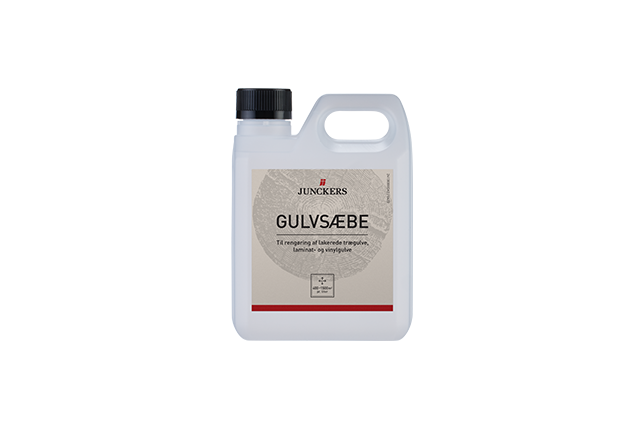Cleaning Your Lacquered Hardwood Floor
There's nothing like the smell of a freshly cleaned wooden floor!
Lacquered wooden floors are a popular choice in many homes. Partly because a lacquered surface is easy to clean and maintain. Below, you'll find simple tips on how to effectively clean a lacquered wooden floor, ensuring it remains beautiful and durable over time.
Why you should clean your lacquered wooden floor
If you have a lacquered wooden floor at home, cleaning is usually a quick job. Nevertheless, regular and proper cleaning of a lacquered wooden floor is an important detail if you want to keep your wooden floor beautiful for many years.
When should I clean my lacquered wooden floor?
On a daily basis, it is only necessary to vacuum, sweep or wipe the floor with a cloth or mop wrung out in clean water. Keep the water dosage to the lowest possible level. If the floor surface is very dirty, it is recommended to add a floor soap to the washing water.
Guide: How to clean your lacquered wooden floor
Depending on the individual cleaning needs, a good floor soap can be used both for daily cleaning and if the floor is very dirty.
Check the instructions on your preferred product to see the recommended mixing ratio.
What you need before you start:
Make sure the wooden floor is vacuumed/swept before washing.
- Floor Soap
- Bucket
- Cloth, mop or other cleaning equipment with low water dosage
1 | Mix Floor Soap
Mix your preferred floor soap with warm water, check instructions for the correct mixing ratio of your product.

2 | Wash the surface along the length of the floor
If the floor is very dirty, you can work with two buckets. One bucket for clean soapy water and one bucket to wring out the cloth.
It is important that no water is left on the floor after washing. If water is spilled, it must be wiped up quickly to avoid moisture damage.

Taking care of lacquered wooden floors
A lacquered wooden floor rarely needs a completely new surface treatment in normal use, but over time, light wear and scratches will appear on the surface. In these cases, you can care for your wood floor with a neutralizer, before applying a new layer of lacquer.
Frequently asked questions and tips for a lacquered wooden floor
Avoid scratches on your wooden floor - use felt pads add
We cannot stress this tip enough. Use felt pads under your furniture. Even if you lift your chair when you sit down at the table, your guests or children may not - a chair dragged across a wooden floor will most likely leave scratches and expose the open wood.
Use doormats and small rugs add
There are areas in your home where your wooden floor is exposed to wear and tear. The entrance hall is where you walk in and out with shoes, siding, water and snow, and the area around the dining table is put to use every day.
Minimize daily wear and tear in these areas by placing a doormat in the entrance hall and carpet under the dining table.
Will my floor withstand sanding? add
The answer depends on how many times your floor has been sanded and how thick your wood floor is. A solid wood floor will be able to handle more sanding than an engineered floor.
For example, Junckers solid wood floors can be sanded to clean wood as follows:
- 14 mm wood floors - 5 times
- 15 mm wood floors - 6 times
- 20.5 mm wood floors - 8-10 times
- 22 mm wood floors - 8-10 times
If you are unsure about the type of floor you have or whether your floor can withstand sanding, you can contact a floor sander.
Can I strip or sand my wooden floor myself? add
It's a good idea to let a professional floor planer do the work. On the other hand, a number of people are increasingly choosing to sand their wooden floors themselves. If in doubt, consider contacting a professional craftsman to help you out.
How long is the lifespan of wood flooring? add
The lifespan of your wood floor depends on how you treat it. If you take care of your wood floor regularly, it's not the wood itself that will wear out, but only the surface treatment. This means that a wooden floor can last for many generations if you make sure to refresh it with floor varnish or a maintenance oil at appropriate intervals.
Be aware that in some areas of the home the wear and tear on the floor is greater and therefore requires more maintenance. High traffic areas, such as the hallway and kitchen, typically wear faster than the living room and bedroom. If there are pets and children in the home, the floor will also wear a little more.
To maximize the lifespan of the floor, it should not be exposed to excessive use of water or unnaturally high humidity.
